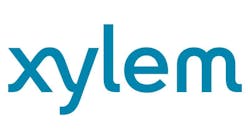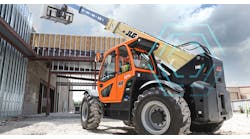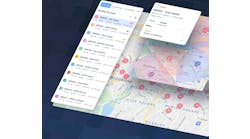Rouse Asset Services offers Rental Metrics Benchmark Service
Supposing you have branches in Columbus, Ohio, and Pittsburgh, and you don't think the returns and the rates are where they should be for the amount of utilization you have there. Wouldn't you like to know how your branches stack up against your competitors? If you're getting an average monthly rate of $2,400 for a 10,000-pound-capacity high-reach forklift, wouldn't you like to know if your five major competitors in that market are averaging $2,600?
Then if you had that information, you'd probably want to know how you stack up in those markets in other equipment categories. What if your teams in Denver and Phoenix are under the market average in most cat classes? It's one thing to tell your managers and sales staff they need to bring their rates up, but quite another to tell them with certainty they are 12-percent below average for the market in generators, 14-percent below market average in mid-sized skid-steer loaders, and 17-percent below market average in 19-foot scissorlifts and tell them the exact amount of the average rate.
Now it is possible to know that information and a lot more with an extraordinary program known as Rouse Analytics, created by Beverly Hills, Calif.-based Rouse Asset Services. Best known for its asset services, Rouse is in fact a 90-year-old company that started out as an auction appraisal and liquidation company and in recent years became focused on doing appraisals for construction equipment rental companies, a service that became very popular during the consolidation wave of the late 1990s.
Rouse's Rental Metrics Benchmark Service measures four key metrics on a total fleet basis: rental rates, physical utilization, dollar utilization and fleet age.
The Rouse team provides a substantial amount of information for free simply in exchange for supplying Rouse with the data, which remains confidential. In other words, Rouse would analyze the data and compute average rates without revealing the data of particular companies. This information includes interactive, drillable reporting on a company's own rental rates and key performance metrics, as defined in the American Rental Association standard metrics, which Rouse was instrumental in helping to develop. (It should be noted that Rouse can only report on a market's average rates after a 90-day delay because of the Federal Trade Commission's anti-trust guidelines.)
“We also provide them with a monthly total fleet comparison of their metrics to the industry at a national, regional and local market level,” says Phil Mauss, managing director, Rouse Analytics.
However, there is a lot more to be learned if a rental company is willing to pay some for the services. i.e., drilling down and measuring performance versus the benchmark by product types, where a company stands in relation to others on monthly, weekly, and daily rates and other key performance metrics in each market that it does business in. The metrics are measured based on the ARA Rental Market Metrics, a standard Rouse was instrumental in helping to develop.
The information can be viewed in a variety of formats. “At the total fleet and category level, we've got four different ways to look at it,” says Gary McCardle, executive vice president and chief operating officer of Rouse Asset Services. “We've got a location comparison, fleet comparison, revenue distribution and then a map. And we have a graph that tells you that for all the markets Company X is in, everything to the lower left is places where they're below on rates and below on physical utilization. And here's the benchmark for that rate and here's the benchmark for physical utilization.
“So let's say here, in the Sacramento market, Company X is doing $3.9 million on revenue on transactions Rouse can compare and it looks like Company X could have earned $4.02 million just by reaching the benchmark. So Company X is 2-percent down and $89,000 is the opportunity in that market just by bringing rates up to the average. Physical utilization is 72 percent but the benchmark in the market is 75 percent. And you can measure this per month, per year or any time period you want.”
So at any moment, if a rental company wants to know how it is doing with 19-foot scissorlifts in Birmingham compared to the competition, or air compressors in Memphis or any piece of equipment in any covered market for any time period, all it takes is a few keystrokes. A company can, also with a few keystrokes, determine how it is faring in physical or dollar utilization, rates, or fleet age compared to its competitors in markets covered by Rouse. It can also determine how it is faring in ancillary revenue categories such as collecting fuel charges, environmental fees, delivery and pickup charges and damage waiver versus its competition.
One of the most popular ways to measure performance is to fuse revenue and physical utilization together on a trend line for a particular cat class over a period of some months. As a company brings its rates up in a particular market and sees physical utilization is below benchmark, it can concentrate on raising that physical utilization to match the increase in rental rates.
Another analysis the RMBS makes is taking a look at what are the highest rates a company is getting in a particular market with its best contracts and what are its lowest. For example, the Rouse team showed a graphic where a rental company's lowest rates on a high-reach forklift in a particular market were nearly 10-percent lower than the lowest rates of any of its competitors. So this rental company had to come to grips with the fact that it was introducing lower rates for that product than any of its competitors in that market, something its management didn't even know it was doing. At the same time, the highest rates it was getting in that category were about 10-percent less than what its competitors were getting from its highest-paying customers. So the rental company could really see the adjustments it needed to make in that market.
Rouse Analytics requires five participating companies to be able to adequately cover a market. Currently it is covering about 35 markets in the United States and will be launching the service covering Canada in the very near future. It is also working on a rollout in Australia and is preparing to bring its services to several European countries.
If you want to know more about Rouse Analytics, go to www.rentalmetrics.com.





